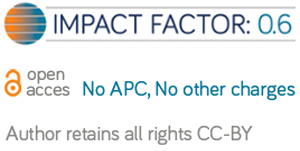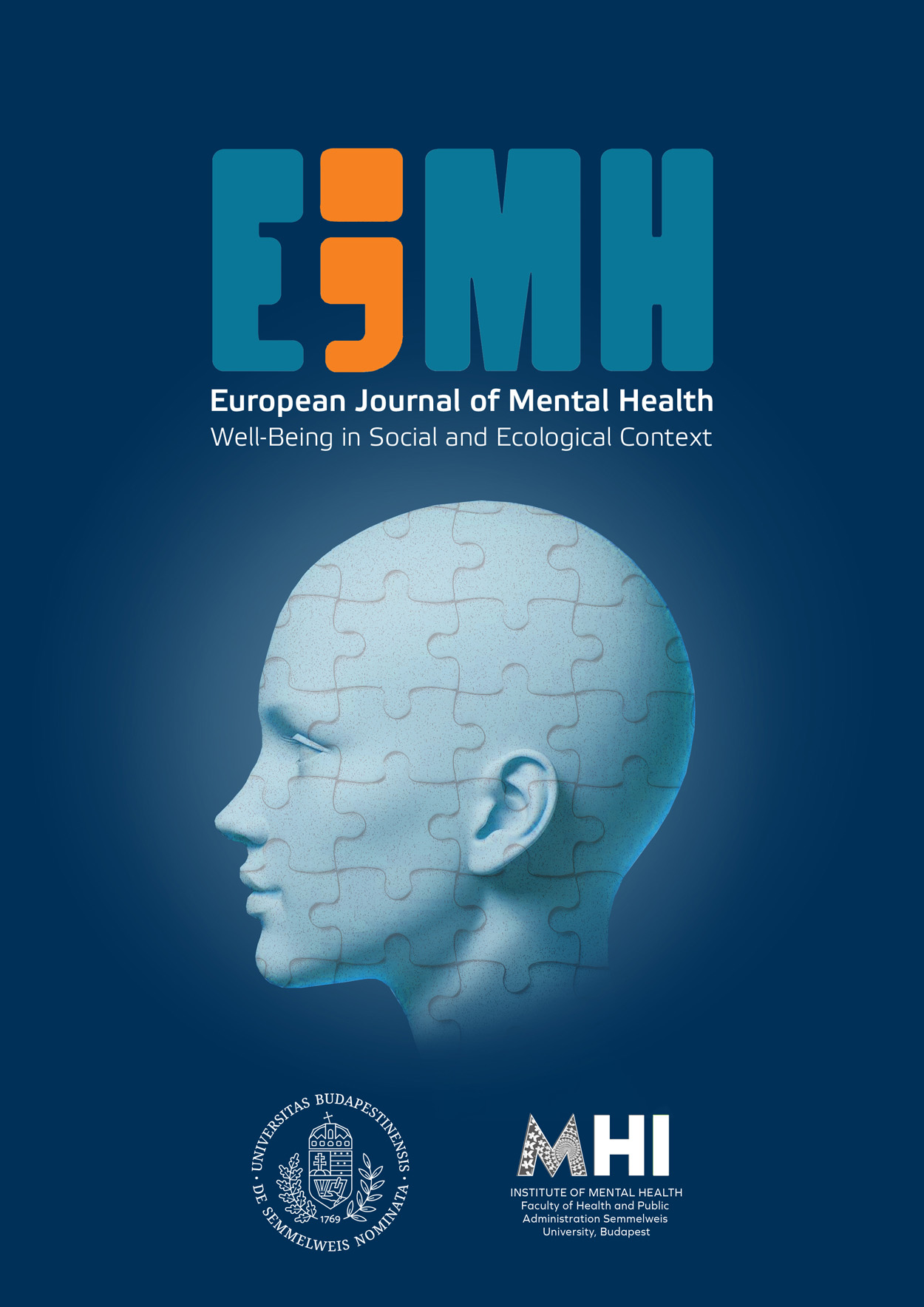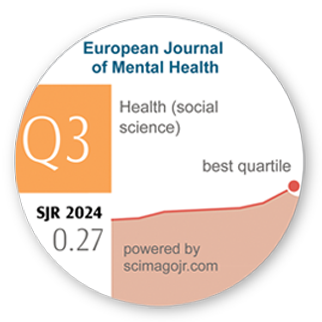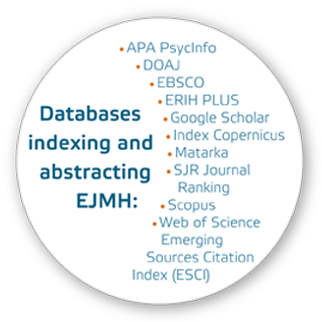The Role of Majority Status in Shaping Self-Esteem: A Comparative Study of Muslim and Christian College Students in Indonesia
DOI:
https://doi.org/10.5708/EJMH.20.2025.0039Keywords:
religiousness, self-esteem, Muslims, Christians, IndonesiaAbstract
Introduction: Self-esteem is an adaptive trait that boosts well-being. The relationship between religiosity and self-esteem is complex, with mixed results from empirical studies. Culture and dimensions of religiousness may influence this relationship.
Aim: The main purpose of this study is to understand the connection between religiousness and self-esteem in two different conditions: as a majority and as a minority.
Methods: This study’s participants are college students who identify as Muslim or Christian. They are from two regions in Indonesia: Jabodetabek (Java Island), where Muslims are the majority; and East Nusa Tenggara and North Sulawesi (outside of Java), where Muslims are in the minority. Most of the respondents were between 18 and 25 years old. The survey was conducted online.
Results: No significant differences emerged in religiousness and self-esteem between Muslims and Christians in both Java and regions outside of Java. However, students outside Java Island exhibited higher religiousness and self-esteem, irrespective of their religious affiliation.
Conclusion: This study indicated that religiosity is a social value, with some exceptions.
References
Abdel-Khalek, A. M. (2011). Religiosity, subjective well-being, self-esteem, and anxiety among Kuwaiti Muslim adolescents. Mental Health, Religion & Culture, 14(2), 129–140.
https://doi.org/10.1080/13674670903456463
Abu‐Raiya, H., Sasson, T., & Russo‐Netzer, P. (2021). Presence of meaning, search for meaning, religiousness, satisfaction with life, and depressive symptoms among a diverse Israeli sample. International Journal of Psychology, 56(2), 276–285.
https://doi.org/10.1002/ijop.12709
Acosta-Gonzaga, E. (2023). The effects of self-esteem and academic engagement on university students’ performance. Behavioral Sciences, 13(4), Article 348.
https://doi.org/10.3390/bs13040348
Aditya, Y., Martoyo, I., Nurcahyo, F. A., Ariela, J., & Pramono, R. (2021). Factorial structure of the four basic dimensions of religiousness (4-BDRS) among Muslim and Christian college students in Indonesia. Cogent Psychology, 8(1).
https://doi.org/10.1080/23311908.2021.1974680
Aditya, Y., Martoyo, I., Nurcahyo, F. A., Ariela, J., Amir, Y., & Pramono, R. (2022). Indonesian students’ religiousness, comfort, and anger toward God during the COVID-19 pandemic. Archive for the Psychology of Religion, 44(2), 91–110.
https://doi.org/10.1177/00846724221084917
Aditya, Y., Sani, R., Martoyo, I. M., & Pramono, R. (2018). Predicting well-being from different dimensions of religiousness: Initial application of 4-BDRS scale in Indonesia. In R. Ardi & P. Chobthamkit (Eds.), Proceedings of the 3rd International Conference on Psychology in Health, Educational, Social, and Organizational Settings (ICP-HESOS) (pp. 458–463). Science and Technology Publications.
https://doi.org/10.5220/0008590804580463
Baumeister, R. F., Campbell, J. D., Krueger, J. I., & Vohs, K. D. (2003). Does high self-esteem cause better performance, interpersonal success, happiness, or healthier lifestyles? Psychological Science in the Public Interest, 4(1), 1–44.
https://doi.org/10.1111/1529-1006.01431
Benner, A. D., Wang, Y., Shen, Y., Boyle, A. E., Polk, R., & Cheng, Y. P. (2018). Racial/ethnic discrimination and well-being during adolescence: A meta-analytic review. American Psychologist, 73(7), 855–883.
https://doi.org/10.1037/amp0000204
Błażek, M., & Besta, T. (2012). Self-concept clarity and religious orientations: Prediction of purpose in life and self-esteem. Journal of Religion and Health, 51, 947–960.
https://doi.org/10.1007/s10943-010-9407-y
BPS-Statistics Indonesia. (2023). Statistical Yearbook of Indonesia 2023. https://www.bps.go.id/en/publication/2023/02/28/18018f9896f09f03580a614b/statistical-yearbook-of-indonesia-2023.html
Chen, Z., Zhu, M., Zheng, L., & Xie, X. (2022). Personal wisdom and quality of life among Chinese older adults. Journal of Health Psychology, 27(7), 1646–1658.
https://doi.org/10.1177/1359105321999093
Dormann, C. F., Elith, J., Bacher, S., Buchmann, C., Carl, G., Carré, G., Marquéz, J. R. G., Gruber, B., Lafourcade, B., Leitão, P. J., Münkemüller, T., McClean, C., Osborne, P. E., Reineking, B., Schröder, B., Skidmore, A. K., Zurell, D., & Lautenbach, S. (2013). Collinearity: A review of methods to deal with it and a simulation study evaluating their performance. Ecography, 36(1), 27–46.
https://doi.org/10.1111/j.1600-0587.2012.07348.x
Du, H., King, R. B., & Chi, P. (2017). Self-esteem and subjective well-being revisited: The roles of personal, relational, and collective self-esteem. PloS One, 12(8), e0183958.
https://doi.org/10.1371/journal.pone.0183958
Ellison, C. G. & Levin, J. S. (1998). The religion-health connection: Evidence, theory, and future directions. Health Education & Behavior, 25(6), 700–720.
https://doi.org/10.1177/109019819802500603
Entringer, T. M., Lenhausen, M. R., Hopwood, C. J., & Bleidorn, W. (2023). No evidence for transactional effects between religiosity and self-esteem in a secular country. Social Psychological and Personality Science, 15(3), 360–369.
Erken, G., H., Francis, L. J., & McKenna, U. (2022). Love for Allah and love for self: Exploring the connection between religious affect and self-esteem among Muslim adolescents in England. Journal of Beliefs & Values, 44(1), 99–109.
https://doi.org/10.1080/13617672.2021.2018215
Evans, J., Starr, K. J., Corichi, M., & Miner, W. (2023). Buddhism, Islam and religious pluralism in South and Southeast Asia. Pew Research Center.
https://www.pewresearch.org/religion/2023/09/12/religious-practices-southeast-asia/
Every, D., & Perry, R. (2014). The relationship between perceived religious discrimination and self‐esteem for Muslim Australians. Australian Journal of Psychology, 66(4), 241–248.
https://doi.org/10.1111/ajpy.12067
Gebauer, J. E., Sedikides, C., & Neberich, W. (2012). Religiosity, social self-esteem, and psychological adjustment: On the cross-cultural specificity of the psychological benefits of religiosity. Psychological Science, 23(2), 158–160.
https://doi.org/10.1177/0956797611427045
Gebauer, J. E., Sedikides C., Schönbrodt, F. D., Bleidorn, W., Rentfrow, P. J., Potter, J., & Gosling, S. D. (2017). The religiosity as social value hypothesis: A multi-method replication and extension across 65 countries and three levels of spatial aggregation. Journal of Personality and Social Psychology, 113, e18–e39.
https://doi.org/10.1037/pspp0000104
Ghaffari, A., & Çiftçi, A. (2010). Religiosity and self-esteem of Muslim immigrants to the United States: The moderating role of perceived discrimination. International Journal for the Psychology of Religion, 20(1), 14–25.
https://doi.org/10.1080/10508610903418038
Greene, M. L., & Way, N. (2005). Self-esteem trajectories among ethnic minority adolescents: A growth curve analysis of the patterns and predictors of change. Journal of Research on Adolescence, 15(2), 151–178.
https://doi.org/10.1111/j.1532-7795.2005.00090.x
Grubbs, J. B., Wilt, J., Stauner, N., Exline, J. J., & Pargament, K. I. (2016). Self, struggle, and soul: Linking personality, self-concept, and religious/spiritual struggle. Personality and Individual Differences, 101, 144–152.
https://doi.org/10.1016/j.paid.2016.05.365
Harris, M. A., & Orth, U. (2020). The link between self-esteem and social relationships: A meta-analysis of longitudinal studies. Journal of Personality and Social Psychology, 119(6), 1459–1477.
https://doi.org/10.1037/pspp0000265
Hayward, R. D. & Krause, N. (2014). Religion, mental health and well-being: Social aspects. In V. Saroglou (Ed.), Religion, Personality, and Social Behavior (pp. 255–280). Psychology Press.
Hood, R. W., Hill, P. C., & Spilka, B. (2018). The psychology of religion: An empirical approach (5th ed.). Guilford Press.
Iqbal, S., Ahmad, R., & Ayub, N. (2013). Self-esteem: A comparative study of adolescents from mainstream and minority religious groups in Pakistan. Journal of Immigrant and Minority Health, 15(1), 49–56.
https://doi.org/10.1007/s10903-012-9656-9
Kamen, C., Jabson, J. M., Mustian, K. M., & Boehmer, U. (2017). Minority stress, psychosocial resources, and psychological distress among sexual minority breast cancer survivors. Health Psychology, 36(6), 529–537.
https://doi.org/10.1037/hea0000465
Koenig, H. G. (2018). Religion and mental health: Research and clinical applications. Elsevier Academic Press.
Lai, L. C., & Wong-Ip, S. C. (2023). Christianity and the new construct of religious self-esteem. Pastoral Psychology, 1–14.
https://doi.org/10.1007/s11089-023-01082-y
Listiono, L. (2020). The impact of religious institutions on economic growth in Indonesia: Evidence from selected province. Afkaruna: Indonesian Interdisciplinary Journal of Islamic Studies, 16(1), 40–57.
https://doi.org/10.18196/AIIJIS.2020.0112.40-57
Markus, H. R., & Kitayama, S. (1991). Culture and self-esteem – Implications for cognition, emotion, and motivation. Psychological Review, 98(2), 224–253
https://doi.org/10.1037/0033-295X.98.2.224
Martínez Maldonado, R., Pedrão, L. J., Alonso Castillo, M. M., López García, K. S., & Oliva Rodríguez, N. N. (2008). Self-esteem, perceived self-efficacy, consumption of tobacco and alcohol in secondary students from urban and rural areas of Monterrey, Nuevo León, México. Revista Latino-Americana de Enfermagem, 16, 614–620.
https://doi.org/10.1590/S0104-11692008000700018
Mayuzumi, Y. (2023). Survey of rural and urban happiness in Indonesia during the corona crisis. Asia-Pacific Journal of Regional Science 7, 29–67.
https://doi.org/10.1007/s41685-022-00265-4
Munas, M. (2023). It is our motherland too. Diaspora Studies, 2(16), 142–171.
https://doi.org/10.1163/09763457-bja10037
Nasution, H. (2013). Islam ditinjau dari berbagai aspeknya (Jilid 1) [Islam viewed from various aspects]. Penerbit Universitas Indonesia.
Orth, U., & Robins, W. R. (2022). Is high self-esteem beneficial? Revisiting a classic question. American Psychologist, 77(1), 5–17.
https://doi.org/10.1037/amp0000922
Papazisis, G., Nicolaou, P., Tsiga, E., Christoforou, T., & Sapountzi-Krepia, D. (2014). Religious and spiritual beliefs, self-esteem, anxiety, and depression among nursing students. Nursing and Health Sciences, 16(2), 232–238.
https://doi.org/10.1111/nhs.12093
Park, J. Y., & Park, E. Y. (2019). The Rasch analysis of Rosenberg self-esteem scale in individuals with intellectual disabilities. Frontiers in Psychology, 10.
https://doi.org/10.3389/fpsyg.2019.01992
Pieper, J. Z. T., van Uden, M. H. F., & van der Valk, L. (2018). Praying as a form of religious coping in Dutch highly educated Muslim women of Moroccan descent. Archive for the Psychology of Religion, 40(2–3), 141–162.
https://doi.org/10.1163/15736121-12341352
Quinn, D. M., & Crocker, J. (1999). When ideology hurts: Effects of belief in the Protestant ethic and feeling overweight on the psychological well-being of women. Journal of Personality and Social Psychology, 77(2), 402–414.
https://doi.org/10.1037/0022-3514.77.2.402
Regev, I., & Nuttman-Shwartz, O. (2016). Living in a continuous traumatic reality: Impact on elderly persons residing in urban and rural communities. American Journal of Orthopsychiatry, 86(6), 652–661.
https://doi.org/10.1037/ort0000165
Rosenberg, M. (1979). Conceiving the Self. Basic Books.
Saroglou, V. (2011). Believing, bonding, behaving, and belonging: The big four religious dimensions and cultural variation. Journal of Cross-Cultural Psychology, 42(8), 1320–1340.
https://doi.org/10.1177/0022022111412267
Saroglou, V., Clobert, M., Cohen, A. B., Johnson, K. A., Ladd, K. L., Van Pachterbeke, M., Adamovova, L., Blogowska, J., Brandt, P.-Y., Çukur, C. S., Hwang, K.-K., Miglietta, A., Motti-Stefanidi, F., Muñoz-García, A., Murken, S., Roussiau, N., & Tapia Valladares, J. (2020). Believing, bonding, behaving, and belonging: The cognitive, emotional, moral, and social dimensions of religiousness across cultures. Journal of Cross-Cultural Psychology, 51(7–8), 551–575.
https://doi.org/10.1177/0022022120946488
Sedikides, C., & Gebauer, J. E. (2021). Do religious people self-enhance? Current Opinion in Psychology, 40, 29–33.
https://doi.org/10.1016/j.copsyc.2020.08.002
Twenge, J. M., & Campbell, W. K. (2002). Self-esteem and socioeconomic status: A meta-analytic review. Personality and Social Psychology Review, 6(1), 59–71.
https://doi.org/10.1207/S15327957PSPR0601_3
Warsah, I., Masduki, Y., Imron, I., Daheri, M., & Morganna, R. (2019). Muslim minority in Yogyakarta: Between social relationship and religious motivation. Qudus International Journal of Islamic Studies, 7(2), 367–398.
http://dx.doi.org/10.21043/qijis.v7i2.6873
Wu, D. J., Thiem, K. C., & Dasgupta, N. (2022). Female peer mentors early in college have lasting positive impacts on female engineering students that persist beyond graduation. Nature Communications, 13(1), Article 6837.
https://doi.org/10.1038/s41467-022-34508-x
Yoo, H. C., Burrola, K. S., & Steger, M. F. (2010). A preliminary report on a new measure: Internalization of the Model Minority Myth Measure (IM-4) and its psychological correlates among Asian American college students. Journal of Counseling Psychology, 57(1), 114–127.
https://doi.org/10.1037/a0017871
Yu, W., Qian, Y., Abbey, C., Wang, H., Rozelle, S., Stoffel, L. A., & Dai, C. (2022). The role of self-esteem in the academic performance of rural students in China. International Journal of Environmental Research and Public Health, 19(20), Article 13317.
https://doi.org/10.3390/ijerph192013317






